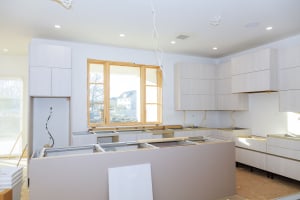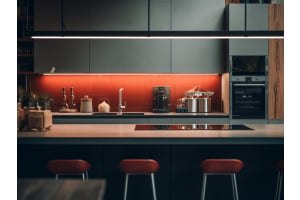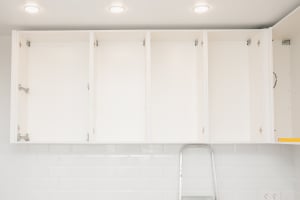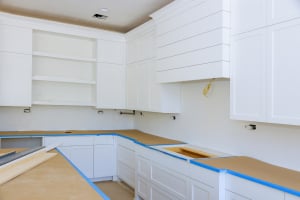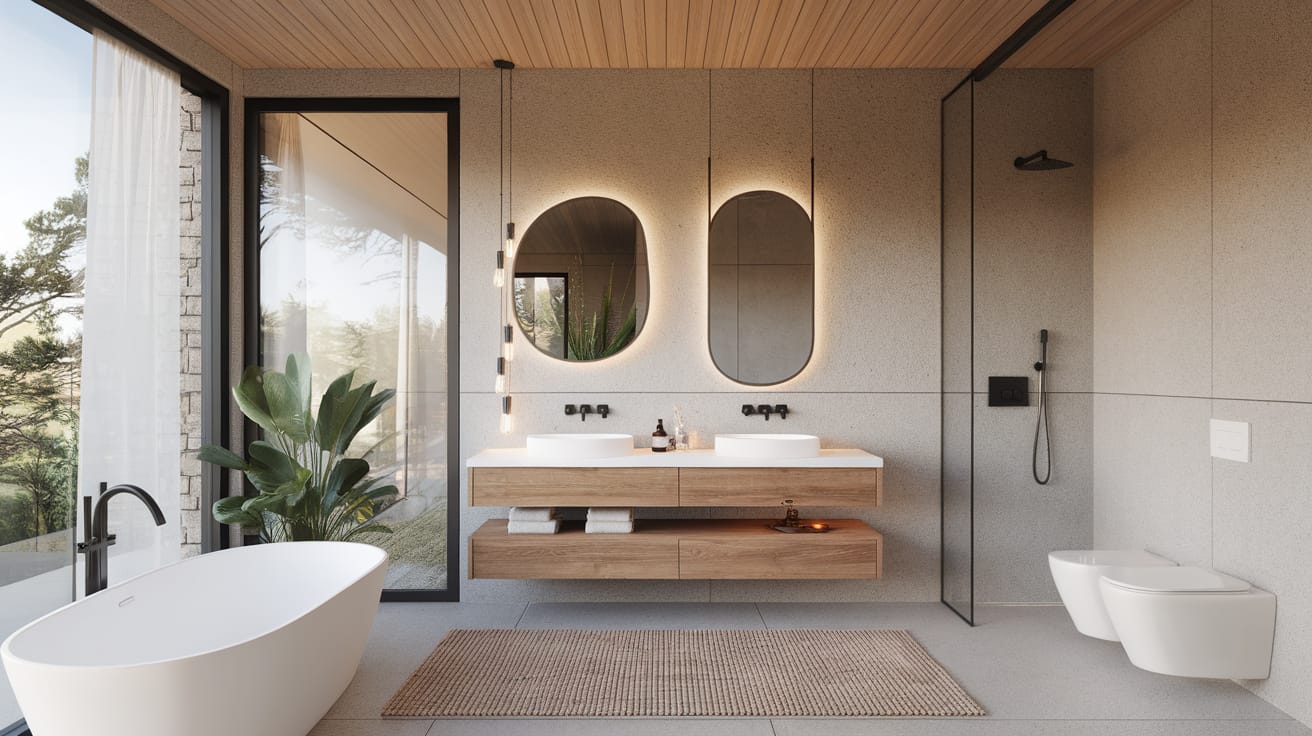
For traditional vanities that sit flush with the floor, adding water-resistant baseboards behind and around the vanity can be a smart decision. Bathrooms are prone to moisture, and water splashes near the sink can seep into small gaps between the vanity and the wall or floor, potentially causing damage over time. Water-resistant baseboards, made from materials like PVC, MDF, or treated wood such as teak, can help prevent this by sealing off these gaps and protecting your walls and floors from water damage.
In contrast, if you're installing a floating bathroom base cabinet–a vanity that is wall-mounted and elevated above the floor–a baseboard might not be necessary. The clean, minimalist design of a floating vanity typically does not require a baseboard, as the space beneath the cabinet is open and easy to clean.
However, for traditional vanities, baseboards not only protect against water but also contribute to a finished, polished look, creating a seamless transition between the vanity, wall, and floor. Ultimately, whether or not you install a baseboard depends on the vanity style and your personal design preferences.
The Case for Installing Baseboard
Here are a few reasons why it makes sense to install a baseboard below your vanity:
Protect the Wall from Water Damage
Water splashing is a common issue in bathrooms. A baseboard can help protect the vanity and the wall behind it from water damage; it can prevent water from seeping into the gaps between the floor and the vanity, extending the lifespan of your vanity and bathroom flooring.
Improve the Overall Appeal
A baseboard can add a finished look to your bathroom, creating a seamless transition between the vanity, the wall, and the floor. It can also be matched to the style of the room, contributing to the overall design aesthetic.
Pest Control
A baseboard can help seal off any gaps between the wall and floor, making it harder for pests to get into your home. Small insects and other unwelcome guests often enter homes through cracks and crevices. These gaps can occur between your walls and floors, especially in older homes, where settling has occurred–a well-installed baseboard can help seal off these potential entry points.
When You Don’t Need Baseboard
For wall-mounted or floating vanities, a baseboard is generally not required because the cabinets are elevated from the floor. If you're going for a sleek, modern look, adding a baseboard might interrupt the clean lines of your design. A vanity without a baseboard can contribute to a minimalist aesthetic.
Bathrooms require regular cleaning, and a baseboard behind a vanity can create an additional area where dust and grime can accumulate. If you want easy maintenance, skip the baseboard behind the vanity.
Tips for Installing Baseboard
Here are some pro tips from 27EStore to consider when installing a baseboard with a bathroom vanity:
Choose the Right Material
Because bathrooms are prone to humidity and water spills, choosing a material for your baseboard that can withstand these conditions is essential.
Teak is often considered the gold standard for bathroom wood due to its natural resistance to moisture and decay. It's durable, aesthetically pleasing, and requires minimal maintenance. Cedar is another excellent choice for bathrooms because it's naturally resistant to moisture, mildew, and insects. It also has a pleasant aroma and adds a warm, rustic touch to any room.
Composite materials like medium-density fiberboard (MDF) or polyvinyl chloride (PVC) baseboards are also worth considering. These materials are engineered to be water-resistant and can mimic the appearance of natural wood; they are often more affordable and require less maintenance, too.
Cut Accurately
Ensuring an accurate cut when sizing baseboards is crucial to their overall appearance and fit. You should measure the wall length where the baseboard will be installed and ensure it fits perfectly with your vanity.
Always remember the golden rule: measure twice, cut once. For cutting baseboards, a miter saw is typically the best tool. It allows for precise angled cuts necessary for corners or ends. When you're ready to cut, take your time to avoid costly mistakes.
Decide on Style
Baseboards come in various designs to suit every home decor theme. Simple and modern baseboards are flat planks that provide a clean, minimalist look and are perfect for contemporary or modern homes. Beaded baseboards have a line or series of lines (beads) carved into the wood.
This design adds a touch of detail and character, which can be a great fit for traditional or country-style homes. Scalloped baseboards are baseboards that feature a scalloped or wavy design. They add a unique, decorative touch and work well in eclectic or whimsical interiors.
Where to Find the Best Baseboards
27EStore is an online marketplace that specializes in providing high-quality home improvement products, including bathroom baseboards. Contact our sales consultants if you want to know how to clean bathroom cabinets before painting or if bathroom and kitchen cabinets have to match. We are happy to give advice on your renovation projects!


